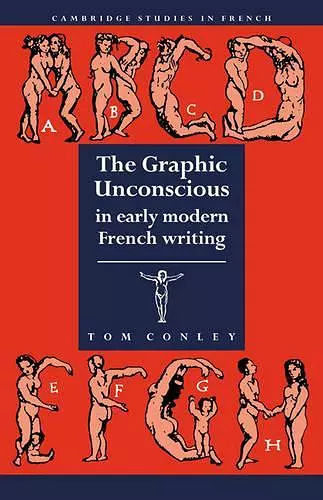The Graphic Unconscious in Early Modern French Writing
Format:Paperback
Publisher:Cambridge University Press
Published:14th Dec '06
Currently unavailable, and unfortunately no date known when it will be back
This paperback is available in another edition too:
- Hardback£97.99(9780521410311)

This 1992 book studies the importance of typographic shapes in French Renaissance literature in the context of psychoanalysis and of the history of printed writing. Focusing on the poetry of Clement Marot, Rabelais's Gargantua, Ronsard's sonnets and the Essais of Montaigne, it argues that printed characters can either supplement or betray what they appear to articulate, revealing compositional patterns that do not appear to be under authorial control. Professor Conley shows that graphic forms are crucial for the development of complex interactions of verbal and visual materials in the early years of print culture. Marot and Rabelais articulate a religious programme through the letter; Ronsard conflates the arts in poetry of the French court in the middle years of the sixteenth century; Montaigne stages the birth of the self in print and inscribes political dimensions in the relationship between the letter and meaning. This unconscious, proto-Freudian writing has complex historical relations with verbal and visual practices in the media of the twentieth century.
"...lively and provocative..." Virginia Quarterly Review
"[Conley] is very convincing. We are taken through a labyrinth of puns, amphibolies, alliterations, symmetries, inversions, analogies, and in a variety of tones. We are gradually won over, in spite of the difficulty of the text. Repetitive patterns and the author's insistence, backed by a solid method of demonstration, work. Moreover, this book is very well documented. Numerous notes reveal a mine of information embracing all points of view on the letter. Conley's historical and critical approaches to the subject bear witness to his scholarship." Danielle Raquidel, French Review
"...a unique and highly creative work, full of erudition, striking and persuasive interpretations, and daringly creative play with and through Renaissance texts. Many readers will be enthralled, some outraged, and none bored by Conley's willingness to follow the 'screen memories,'... Conley's willingness to take risks and his prodigious ability both to perceive the potential recombination of graphic material and to relate detail to large semantic units make The Graphic Unconscious a rewarding and refreshing book." John D. Lyons, Renaissance Quarterly
ISBN: 9780521032223
Dimensions: 215mm x 139mm x 9mm
Weight: 318g
240 pages